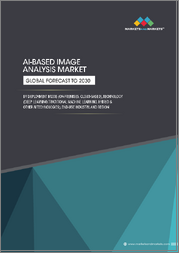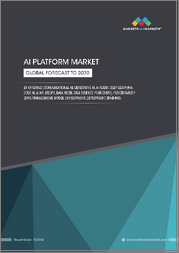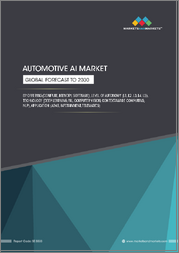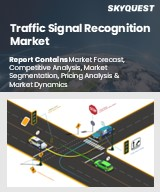
|
시장보고서
상품코드
1589329
세계의 딥러닝 시장 : 유형별, 최종 사용자별, 용도별 예측(2025-2030년)Deep Learning Market by Type (Hardware, Services, Software), End-User (Agriculture, Automotive, Fintech), Application - Global Forecast 2025-2030 |
||||||
딥러닝 시장의 2023년 시장 규모는 55억 7,000만 달러로, 2024년에는 72억 4,000만 달러에 달할 것으로 예측되며, 복합 연간 성장률(CAGR) 30.39%로 성장하여 2030년에는 357억 1,000만 달러에 달할 것으로 예측됩니다.
인공지능(AI) 분야의 머신러닝의 서브세트인 딥러닝은 방대한 데이터로부터 학습함으로써 인간의 뇌 기능을 시뮬레이션하도록 설계되었습니다. 그 적용 범위는 가전, 헬스 케어, 자동차, 금융, 소매 등 다양한 분야 및 이미지 인식 및 음성 인식, 자연 언어 처리, 복잡한 문제 해결 등의 태스크를 강화하는 능력에 의해 그 필요성을 강조 되었습니다. 딥러닝의 최종 용도의 범위는 광대하고 소매업에서 고객 서비스 향상 챗봇부터 자동차의 자율 주행 기술, 헬스 케어의 진단 툴까지, 그 용도는 업계 전체의 서비스와 업무 효율을 근본적으로 변화 합니다. 딥러닝 시장에 영향을 미치는 주요 성장 요인으로는 데이터 생성의 급격한 증가, 컴퓨팅 파워의 진보, 많은 분야에 걸쳐 AI 구동 용도의 급증 등이 있습니다. 이러한 요소는 총체적으로 엄청난 투자를 촉진하고 시장의 급속한 확대에 박차를 가하고 있습니다. 딥러닝이 맞춤형 의료 및 예측 분석의 돌파구를 가져오는 헬스케어와 부정 탐지 및 알고리즘 트레이딩 등 금융 서비스 등의 분야에 최신의 잠재적 비즈니스 기회가 잠들어 있습니다. 이러한 기회를 활용하기 위한 제안으로는 수요가 급증하고 있는 엣지 컴퓨팅이나 AI를 활용한 사이버 보안의 혁신에 주력하는 것을 들 수 있습니다. 그럼에도 불구하고 시장 성장은 높은 도입 비용, 데이터 프라이버시 우려, AI 전문 지식의 기술 격차 등의 한계에 직면하고 있습니다.이러한 문제를 해결하려면 교육 기관과의 파트너십을 키우고 교육 및 개발에 자원을 할당해야 합니다.에 대한 혁신적인 분야는 AI 능력을 민주화 중소기업에서도 사용할 수 있도록 하고 투명성과 설명가능성을 제공하는 AI 모델을 개발하는 데 있습니다. 상황에 민감하게 대응하는 기업의 필요성이 특징입니다.
| 주요 시장 통계 | |
|---|---|
| 기준년(2023) | 55억 7,000만 달러 |
| 예측년(2024) | 72억 4,000만 달러 |
| 예측년(2030) | 357억 1,000만 달러 |
| 복합 연간 성장률(CAGR)(%) | 30.39% |
시장 역학 : 빠르게 진화하는 딥러닝 시장의 주요 시장 인사이트 공개
딥러닝 시장은 수요 및 공급의 역동적인 상호작용에 의해 변모를 이루고 있습니다. 비즈니스 기회를 얻을 수 있습니다. 이러한 동향을 종합적으로 파악함으로써 기업은 정치적, 지리적, 기술적, 사회적, 경제적 영역에 걸친 다양한 리스크를 경감할 수 있어, 소비자 행동과 그것 제조 비용과 구매 동향에 미치는 영향을보다 명확하게 이해할 수 있습니다.
- 시장 성장 촉진요인
- 클라우드 기반 기술 채용 증가
- 고객 중심의 서비스에서 AI 채용 확대
- 헬스케어, 제조업, 자동차산업에 있어서의 용도 증가
- 시장 성장 억제요인
- 유연성과 멀티태스킹성의 부족
- 시장 기회
- 자율주행 기술의 급속한 소개
- 신경망 아키텍처와 트레이닝 알고리즘의 최근 동향
- 시장의 과제
- 기술적 전문지식의 부족, 표준과 프로토콜의 부재
Porter's Five Forces : 딥러닝 시장을 탐색하는 전략 도구
Porter's Five Forces 프레임워크는 딥러닝 시장 경쟁 구도를 이해하는 중요한 도구입니다. Porter's Five Forces Framework는 기업의 경쟁을 평가하고 전략적 기회를 탐구하는 명확한 기술을 설명합니다. 더 강인한 시장에서 포지셔닝을 보장 할 수 있습니다.
PESTLE 분석 : 딥러닝 시장에서 외부 영향을 파악
외부 거시 환경 요인은 딥러닝 시장의 성과 역학을 형성하는 데 매우 중요한 역할을 합니다. 정치적, 경제적, 사회적, 기술적, 법적, 환경적 요인 분석은 이러한 영향을 탐색하는 데 필요한 정보를 제공합니다. PESTLE 요인을 조사함으로써 기업은 잠재적인 위험과 기회를 더 잘 이해할 수 있습니다. 이 분석을 통해 기업은 규제, 소비자 선호, 경제 동향의 변화를 예측하고 앞으로 예상되는 적극적인 의사 결정을 할 준비가 가능합니다.
시장 점유율 분석 딥러닝 시장 경쟁 구도 파악
딥러닝 시장의 상세한 시장 점유율 분석을 통해 공급업체의 성과를 종합적으로 평가할 수 있습니다. 기업은 수익, 고객 기반, 성장률 등 주요 지표를 비교하여 경쟁 포지셔닝을 밝힐 수 있습니다. 이 분석을 통해 시장 집중, 단편화 및 통합 동향을 밝혀내고 공급업체는 경쟁이 치열해지면서 자신의 입지를 높이는 전략적 의사 결정을 내리는 데 필요한 지식을 얻을 수 있습니다.
FPNV 포지셔닝 매트릭스 딥러닝 시장에서 공급업체의 성능 평가
FPNV 포지셔닝 매트릭스는 딥러닝 시장에서 공급업체를 평가하는 중요한 도구입니다. 이 행렬을 통해 비즈니스 조직은 공급업체의 비즈니스 전략과 제품 만족도를 기준으로 평가하여 목표에 맞는 충분한 정보를 바탕으로 의사 결정을 내릴 수 있습니다. 네 가지 사분면을 통해 공급업체를 명확하고 정확하게 부문화하고 전략 목표에 가장 적합한 파트너 및 솔루션을 파악할 수 있습니다.
전략 분석 및 추천 딥러닝 시장에서 성공에 대한 길을 그립니다.
딥러닝 시장의 전략 분석은 시장에서의 현장 강화를 목표로 하는 기업에 필수적입니다. 주요 자원, 역량 및 성과 지표를 검토함으로써 기업은 성장 기회를 파악하고 개선을 위해 노력할 수 있습니다. 이러한 접근 방식을 통해 경쟁 구도에서 과제를 극복하고 새로운 비즈니스 기회를 활용하여 장기적인 성공을 거둘 수 있는 체제를 구축할 수 있습니다.
이 보고서는 주요 관심 분야를 포괄하는 시장의 종합적인 분석을 제공합니다.
1. 시장 침투 : 현재 시장 환경의 상세한 검토, 주요 기업의 광범위한 데이터, 시장 도달범위 및 전반적인 영향력 평가.
2. 시장 개척도 : 신흥 시장의 성장 기회를 파악하고 기존 분야의 확장 가능성을 평가하며 미래 성장을 위한 전략적 로드맵을 제공합니다.
3. 시장 다양화 : 최근 제품 출시, 미개척 지역, 업계의 주요 진보, 시장을 형성하는 전략적 투자를 분석합니다.
4. 경쟁 평가 및 정보 : 경쟁 구도를 철저히 분석하여 시장 점유율, 사업 전략, 제품 포트폴리오, 인증, 규제 당국 승인, 특허 동향, 주요 기업의 기술 진보 등을 검증합니다.
5. 제품 개발 및 혁신 : 미래 시장 성장을 가속할 것으로 예상되는 최첨단 기술, R&D 활동, 제품 혁신을 강조합니다.
또한 이해관계자가 충분한 정보를 바탕으로 의사 결정을 내리는 데 도움이 되는 중요한 질문에 응답합니다.
1. 현재 시장 규모와 향후 성장 예측은?
2. 최고의 투자 기회를 제공하는 제품, 부문 및 지역은 어디입니까?
3. 시장을 형성하는 주요 기술 동향과 규제의 영향은?
4. 주요 벤더의 시장 점유율과 경쟁 포지션은?
5. 벤더 시장 진입, 철수 전략의 원동력이 되는 수익원과 전략적 기회는 무엇인가?
목차
제1장 서문
제2장 조사 방법
제3장 주요 요약
제4장 시장 개요
제5장 시장 인사이트
- 시장 역학
- 성장 촉진요인
- 클라우드 기반 기술 채용 증가
- 고객 중심의 서비스에 있어서 AI 도입 증가
- 헬스케어, 제조, 자동차 업계에서의 용도 증가
- 억제요인
- 유연성과 멀티태스킹 부족
- 기회
- 자율주행 기술의 급속한 소개
- 신경망 아키텍처와 트레이닝 알고리즘의 최근 동향
- 과제
- 기술적인 전문지식의 부족과 표준이나 프로토콜의 부족
- 성장 촉진요인
- 시장 세분화 분석
- Porter's Five Forces 분석
- PESTEL 분석
- 정치적
- 경제
- 사교
- 기술적
- 법률상
- 환경
제6장 딥러닝 시장 : 유형별
- 하드웨어
- 중앙처리장치
- 필드 프로그래머블 게이트 어레이
- 그래픽 프로세싱 유닛
- 서비스
- 소프트웨어
- 플랫폼 또는 API
- 솔루션
제7장 딥러닝 시장 : 최종 사용자별
- 농업
- 자동차
- Fintech
- 헬스케어
- 인사
- 법
- 제조업
- 마케팅
- 소매
- 보안
제8장 딥러닝 시장 : 용도별
- 데이터 마이닝
- 화상인식
- 신호 인식
제9장 아메리카의 딥러닝 시장
- 아르헨티나
- 브라질
- 캐나다
- 멕시코
- 미국
제10장 아시아태평양의 딥러닝 시장
- 호주
- 중국
- 인도
- 인도네시아
- 일본
- 말레이시아
- 필리핀
- 싱가포르
- 한국
- 대만
- 태국
- 베트남
제11장 유럽, 중동 및 아프리카의 딥러닝 시장
- 덴마크
- 이집트
- 핀란드
- 프랑스
- 독일
- 이스라엘
- 이탈리아
- 네덜란드
- 나이지리아
- 노르웨이
- 폴란드
- 카타르
- 러시아
- 사우디아라비아
- 남아프리카
- 스페인
- 스웨덴
- 스위스
- 터키
- 아랍에미리트(UAE)
- 영국
제12장 경쟁 구도
- 시장 점유율 분석(2023년)
- FPNV 포지셔닝 매트릭스(2023년)
- 경쟁 시나리오 분석
- 전략 분석과 제안
기업 목록
- Advanced Micro Devices, Inc.
- ARM Ltd.
- Broadcom Corporation
- CEVA Inc.
- Clarifai, Inc.
- Google LLC
- Huawei Technologies
- Intel Corporation
- International Business Machines Corporation
- Microsoft Corporation
- Neurala
- NVIDIA Corporation
- OpenAI
- Qualcomm Technologies, Inc
- Samsung Group
- Starmind
The Deep Learning Market was valued at USD 5.57 billion in 2023, expected to reach USD 7.24 billion in 2024, and is projected to grow at a CAGR of 30.39%, to USD 35.71 billion by 2030.
Deep learning, a subset of machine learning in the field of artificial intelligence (AI), is designed to simulate human brain function by learning from vast amounts of data. Its scope encompasses diverse sectors including consumer electronics, healthcare, automotive, finance, and retail, underlining its necessity due to its capacity to enhance tasks like image and speech recognition, natural language processing, and complex problem-solving. The end-use scope of deep learning is vast; from chatbots enhancing customer service in retail to autonomous driving technologies in automotive, and diagnostic tools in healthcare, its applications fundamentally transform services and operational efficiencies across industries. Key growth factors influencing the deep learning market include exponential growth in data generation, advances in computing power, and the surge in AI-driven applications across numerous sectors. These elements collectively drive substantial investment, fueling rapid market expansion. The latest potential opportunities lie in sectors like healthcare, where deep learning can lead to breakthroughs in personalized medicine and predictive analytics, and financial services for fraud detection and algorithmic trading. Recommendations to leverage these opportunities include focusing on innovation in edge computing and AI-powered cybersecurity, where demand is skyrocketing. Nonetheless, market growth faces limitations including high implementation costs, data privacy concerns, and a skills gap in AI expertise. Addressing these involves dedicating resources to training and development alongside fostering partnerships with educational institutions. Challenging factors also include regulatory challenges and ethical considerations surrounding AI deployment. Innovative areas for business growth lie in democratizing AI capabilities, making them accessible for small and mid-sized businesses, and developing AI models that offer transparency and explainability. Overall, the market is dynamic and competitive, characterized by rapid technological evolution and the need for companies to remain agile and responsive to emerging trends and regulatory landscapes.
| KEY MARKET STATISTICS | |
|---|---|
| Base Year [2023] | USD 5.57 billion |
| Estimated Year [2024] | USD 7.24 billion |
| Forecast Year [2030] | USD 35.71 billion |
| CAGR (%) | 30.39% |
Market Dynamics: Unveiling Key Market Insights in the Rapidly Evolving Deep Learning Market
The Deep Learning Market is undergoing transformative changes driven by a dynamic interplay of supply and demand factors. Understanding these evolving market dynamics prepares business organizations to make informed investment decisions, refine strategic decisions, and seize new opportunities. By gaining a comprehensive view of these trends, business organizations can mitigate various risks across political, geographic, technical, social, and economic domains while also gaining a clearer understanding of consumer behavior and its impact on manufacturing costs and purchasing trends.
- Market Drivers
- Increasing adoption of cloud-based technology
- Growing AI adoption in customer centric services
- Rising applications in healthcare, manufacturing, and automotive industries
- Market Restraints
- Lack of flexibility and multitasking
- Market Opportunities
- Rapid introduction of self-driving technology
- Recent developments in neural network architecture and training algorithms
- Market Challenges
- Lack of technical expertise and absence of standards and protocols
Porter's Five Forces: A Strategic Tool for Navigating the Deep Learning Market
Porter's five forces framework is a critical tool for understanding the competitive landscape of the Deep Learning Market. It offers business organizations with a clear methodology for evaluating their competitive positioning and exploring strategic opportunities. This framework helps businesses assess the power dynamics within the market and determine the profitability of new ventures. With these insights, business organizations can leverage their strengths, address weaknesses, and avoid potential challenges, ensuring a more resilient market positioning.
PESTLE Analysis: Navigating External Influences in the Deep Learning Market
External macro-environmental factors play a pivotal role in shaping the performance dynamics of the Deep Learning Market. Political, Economic, Social, Technological, Legal, and Environmental factors analysis provides the necessary information to navigate these influences. By examining PESTLE factors, businesses can better understand potential risks and opportunities. This analysis enables business organizations to anticipate changes in regulations, consumer preferences, and economic trends, ensuring they are prepared to make proactive, forward-thinking decisions.
Market Share Analysis: Understanding the Competitive Landscape in the Deep Learning Market
A detailed market share analysis in the Deep Learning Market provides a comprehensive assessment of vendors' performance. Companies can identify their competitive positioning by comparing key metrics, including revenue, customer base, and growth rates. This analysis highlights market concentration, fragmentation, and trends in consolidation, offering vendors the insights required to make strategic decisions that enhance their position in an increasingly competitive landscape.
FPNV Positioning Matrix: Evaluating Vendors' Performance in the Deep Learning Market
The Forefront, Pathfinder, Niche, Vital (FPNV) Positioning Matrix is a critical tool for evaluating vendors within the Deep Learning Market. This matrix enables business organizations to make well-informed decisions that align with their goals by assessing vendors based on their business strategy and product satisfaction. The four quadrants provide a clear and precise segmentation of vendors, helping users identify the right partners and solutions that best fit their strategic objectives.
Strategy Analysis & Recommendation: Charting a Path to Success in the Deep Learning Market
A strategic analysis of the Deep Learning Market is essential for businesses looking to strengthen their global market presence. By reviewing key resources, capabilities, and performance indicators, business organizations can identify growth opportunities and work toward improvement. This approach helps businesses navigate challenges in the competitive landscape and ensures they are well-positioned to capitalize on newer opportunities and drive long-term success.
Key Company Profiles
The report delves into recent significant developments in the Deep Learning Market, highlighting leading vendors and their innovative profiles. These include Advanced Micro Devices, Inc., ARM Ltd., Broadcom Corporation, CEVA Inc., Clarifai, Inc., Google LLC, Huawei Technologies, Intel Corporation, International Business Machines Corporation, Microsoft Corporation, Neurala, NVIDIA Corporation, OpenAI, Qualcomm Technologies, Inc, Samsung Group, and Starmind.
Market Segmentation & Coverage
This research report categorizes the Deep Learning Market to forecast the revenues and analyze trends in each of the following sub-markets:
- Based on Type, market is studied across Hardware, Services, and Software. The Hardware is further studied across Central Processing Unit, Field Programmable Gate Array, and Graphics Processing Unit. The Software is further studied across Platform or API and Solutions.
- Based on End-User, market is studied across Agriculture, Automotive, Fintech, Healthcare, Human Resources, Law, Manufacturing, Marketing, Retail, and Security.
- Based on Application, market is studied across Data Mining, Image Recognition, and Signal Recognition.
- Based on Region, market is studied across Americas, Asia-Pacific, and Europe, Middle East & Africa. The Americas is further studied across Argentina, Brazil, Canada, Mexico, and United States. The United States is further studied across California, Florida, Illinois, New York, Ohio, Pennsylvania, and Texas. The Asia-Pacific is further studied across Australia, China, India, Indonesia, Japan, Malaysia, Philippines, Singapore, South Korea, Taiwan, Thailand, and Vietnam. The Europe, Middle East & Africa is further studied across Denmark, Egypt, Finland, France, Germany, Israel, Italy, Netherlands, Nigeria, Norway, Poland, Qatar, Russia, Saudi Arabia, South Africa, Spain, Sweden, Switzerland, Turkey, United Arab Emirates, and United Kingdom.
The report offers a comprehensive analysis of the market, covering key focus areas:
1. Market Penetration: A detailed review of the current market environment, including extensive data from top industry players, evaluating their market reach and overall influence.
2. Market Development: Identifies growth opportunities in emerging markets and assesses expansion potential in established sectors, providing a strategic roadmap for future growth.
3. Market Diversification: Analyzes recent product launches, untapped geographic regions, major industry advancements, and strategic investments reshaping the market.
4. Competitive Assessment & Intelligence: Provides a thorough analysis of the competitive landscape, examining market share, business strategies, product portfolios, certifications, regulatory approvals, patent trends, and technological advancements of key players.
5. Product Development & Innovation: Highlights cutting-edge technologies, R&D activities, and product innovations expected to drive future market growth.
The report also answers critical questions to aid stakeholders in making informed decisions:
1. What is the current market size, and what is the forecasted growth?
2. Which products, segments, and regions offer the best investment opportunities?
3. What are the key technology trends and regulatory influences shaping the market?
4. How do leading vendors rank in terms of market share and competitive positioning?
5. What revenue sources and strategic opportunities drive vendors' market entry or exit strategies?
Table of Contents
1. Preface
- 1.1. Objectives of the Study
- 1.2. Market Segmentation & Coverage
- 1.3. Years Considered for the Study
- 1.4. Currency & Pricing
- 1.5. Language
- 1.6. Stakeholders
2. Research Methodology
- 2.1. Define: Research Objective
- 2.2. Determine: Research Design
- 2.3. Prepare: Research Instrument
- 2.4. Collect: Data Source
- 2.5. Analyze: Data Interpretation
- 2.6. Formulate: Data Verification
- 2.7. Publish: Research Report
- 2.8. Repeat: Report Update
3. Executive Summary
4. Market Overview
5. Market Insights
- 5.1. Market Dynamics
- 5.1.1. Drivers
- 5.1.1.1. Increasing adoption of cloud-based technology
- 5.1.1.2. Growing AI adoption in customer centric services
- 5.1.1.3. Rising applications in healthcare, manufacturing, and automotive industries
- 5.1.2. Restraints
- 5.1.2.1. Lack of flexibility and multitasking
- 5.1.3. Opportunities
- 5.1.3.1. Rapid introduction of self-driving technology
- 5.1.3.2. Recent developments in neural network architecture and training algorithms
- 5.1.4. Challenges
- 5.1.4.1. Lack of technical expertise and absence of standards and protocols
- 5.1.1. Drivers
- 5.2. Market Segmentation Analysis
- 5.3. Porter's Five Forces Analysis
- 5.3.1. Threat of New Entrants
- 5.3.2. Threat of Substitutes
- 5.3.3. Bargaining Power of Customers
- 5.3.4. Bargaining Power of Suppliers
- 5.3.5. Industry Rivalry
- 5.4. PESTLE Analysis
- 5.4.1. Political
- 5.4.2. Economic
- 5.4.3. Social
- 5.4.4. Technological
- 5.4.5. Legal
- 5.4.6. Environmental
6. Deep Learning Market, by Type
- 6.1. Introduction
- 6.2. Hardware
- 6.2.1. Central Processing Unit
- 6.2.2. Field Programmable Gate Array
- 6.2.3. Graphics Processing Unit
- 6.3. Services
- 6.4. Software
- 6.4.1. Platform or API
- 6.4.2. Solutions
7. Deep Learning Market, by End-User
- 7.1. Introduction
- 7.2. Agriculture
- 7.3. Automotive
- 7.4. Fintech
- 7.5. Healthcare
- 7.6. Human Resources
- 7.7. Law
- 7.8. Manufacturing
- 7.9. Marketing
- 7.10. Retail
- 7.11. Security
8. Deep Learning Market, by Application
- 8.1. Introduction
- 8.2. Data Mining
- 8.3. Image Recognition
- 8.4. Signal Recognition
9. Americas Deep Learning Market
- 9.1. Introduction
- 9.2. Argentina
- 9.3. Brazil
- 9.4. Canada
- 9.5. Mexico
- 9.6. United States
10. Asia-Pacific Deep Learning Market
- 10.1. Introduction
- 10.2. Australia
- 10.3. China
- 10.4. India
- 10.5. Indonesia
- 10.6. Japan
- 10.7. Malaysia
- 10.8. Philippines
- 10.9. Singapore
- 10.10. South Korea
- 10.11. Taiwan
- 10.12. Thailand
- 10.13. Vietnam
11. Europe, Middle East & Africa Deep Learning Market
- 11.1. Introduction
- 11.2. Denmark
- 11.3. Egypt
- 11.4. Finland
- 11.5. France
- 11.6. Germany
- 11.7. Israel
- 11.8. Italy
- 11.9. Netherlands
- 11.10. Nigeria
- 11.11. Norway
- 11.12. Poland
- 11.13. Qatar
- 11.14. Russia
- 11.15. Saudi Arabia
- 11.16. South Africa
- 11.17. Spain
- 11.18. Sweden
- 11.19. Switzerland
- 11.20. Turkey
- 11.21. United Arab Emirates
- 11.22. United Kingdom
12. Competitive Landscape
- 12.1. Market Share Analysis, 2023
- 12.2. FPNV Positioning Matrix, 2023
- 12.3. Competitive Scenario Analysis
- 12.4. Strategy Analysis & Recommendation
Companies Mentioned
- 1. Advanced Micro Devices, Inc.
- 2. ARM Ltd.
- 3. Broadcom Corporation
- 4. CEVA Inc.
- 5. Clarifai, Inc.
- 6. Google LLC
- 7. Huawei Technologies
- 8. Intel Corporation
- 9. International Business Machines Corporation
- 10. Microsoft Corporation
- 11. Neurala
- 12. NVIDIA Corporation
- 13. OpenAI
- 14. Qualcomm Technologies, Inc
- 15. Samsung Group
- 16. Starmind



















